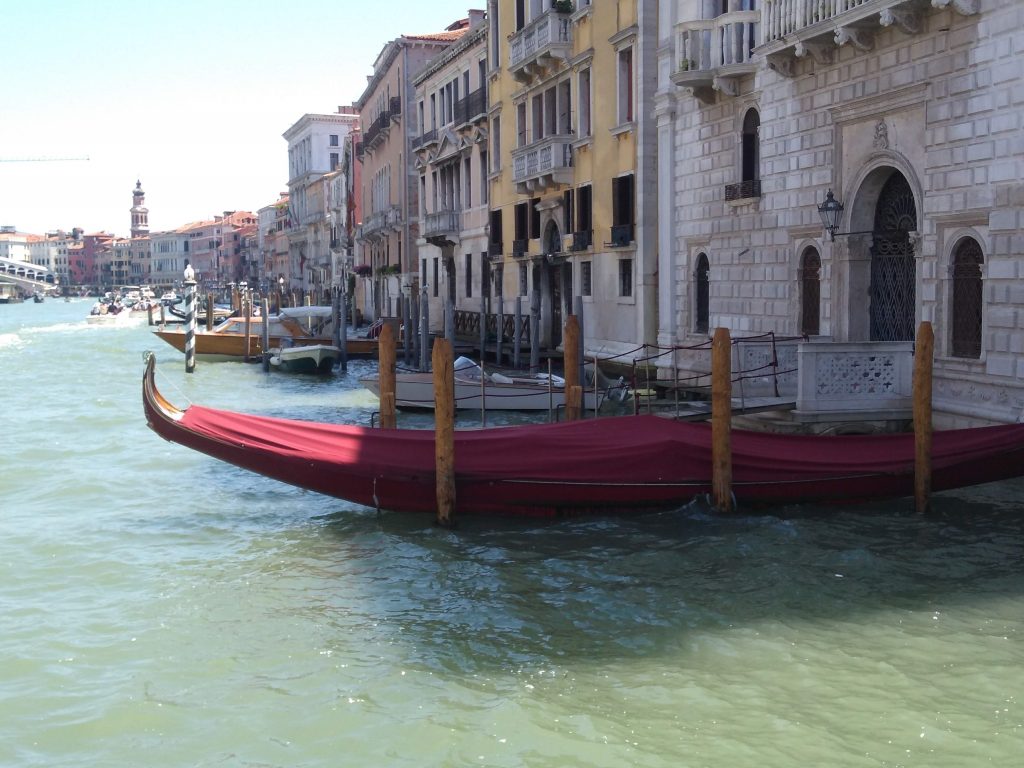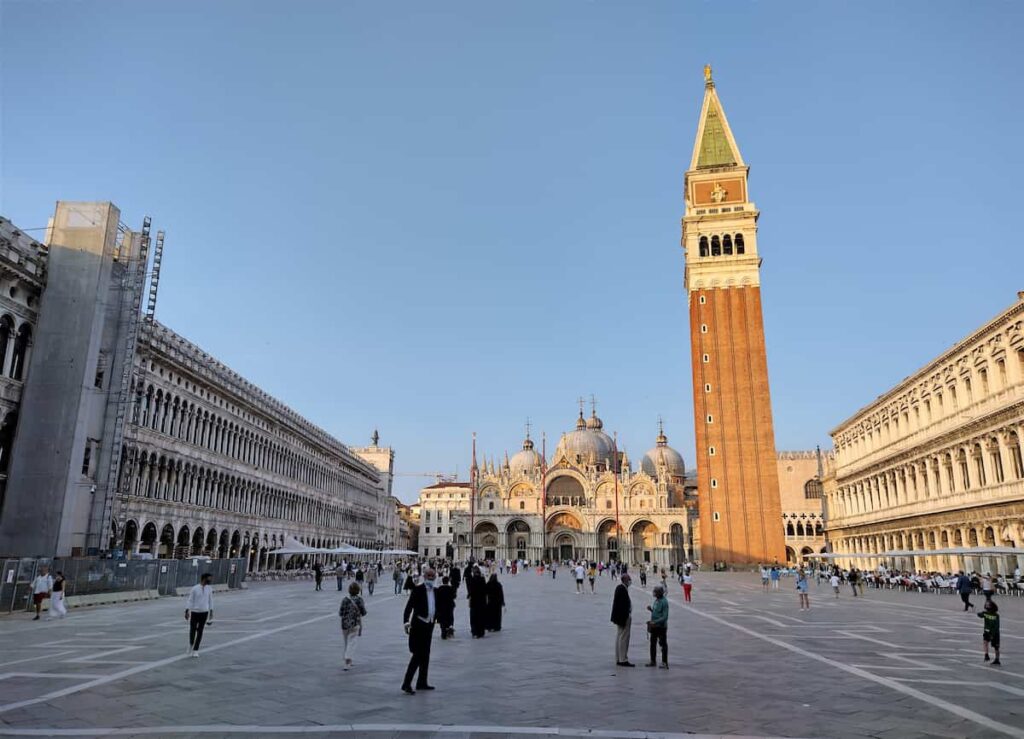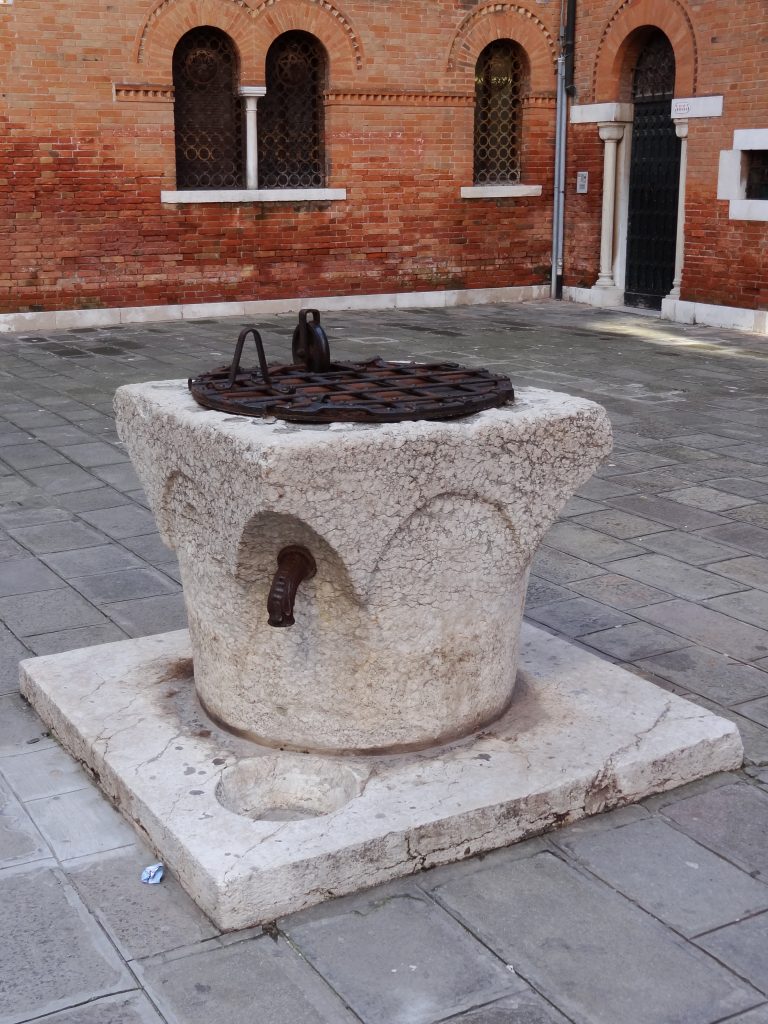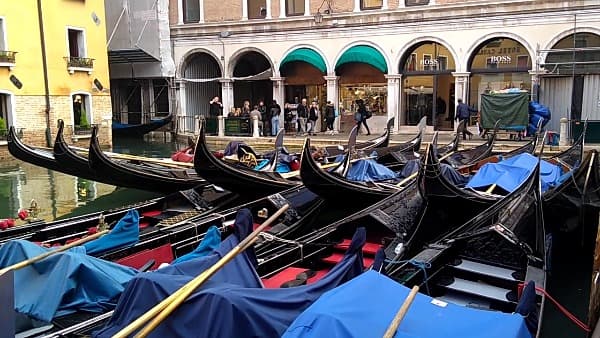I have chosen 8 facts about Venice that, at least to me, stand out. It makes my little town, at least to me, very special, and an unequal spot on this enormous turning ball we call the world. Venice is what I call home, but please read along, and hopefully, I can contribute with something you didn’t know before…
1. The longest-lasting republic in the world.
The Republic of Venice has the record as the longest period for a government to last without changes in the political system. It lasted for 1100 years from 693, when the first Doge, Paoluccio Anafesto was elected Doge, until 1793 when Napoleon invaded Italy and Venice. Anafesto was never the ruler of Venice as we know it today. Back then the republic was a treaty between small city-states around and in the lagoon. He was elected in Heraclia, a city that doesn’t exist anymore but once was northeast of Venice. In 693 Heraclia was the capital of the republic.

2. Under Venice, there isn’t really any land.
This is a really fascinating fact. It started out as a few isolated islands with no more than one or two acres of mud. If you look on your right at low tide, when you cross the bridge from the mainland you get an idea about the ground on which Venice is built.
The first settlers built their cabins on the sand but very soon there just wasn’t enough sand to build on. So they had to invent a technique to 1. not have the palaces and heavy structures just sink into the mud and 2. create more land to build on.
And the technique was to drive long pointed poles straight down into the ground. Underneath Venice, there is a forest. Yes, there are millions and millions of poles withstanding the weight of the city. These logs don’t rot because the mud keeps the oxygen out and so the microorganisms can’t work. Luckily… Otherwise, the city would sink like a boat with a hole in it.
3. Venice isn’t really sinking.
Well, actually it is but it doesn’t sink more than any other city in the neighborhood. The whole Po valley is sand and debris from the great rivers. Here are no mountains and no bedrock, so anything you put on top will eventually sink. And Venice is sinking a little more than 1 millimeter a year. The sea level is rising by about 2 millimeters a year.
But if climate change should result in an increased sea level globally, then Venice would be at serious risk. The IPCC (Intergovernmental Panel on climate change) has estimated a rise in sea level at the end of the century to be between 40 and 67 centimeters. And half a meter would mean the end of Venice. Or we would have to keep the MOSE gates closed permanently.
4. The Gondolas aren’t all black.

There was a time when they were in all kinds of colors though. And not only colors; Gold, Silver, Silk, and Velvet were used to the extent that the authorities had to make laws to protect the environment from the vanity of wealthy citizens and nobles. It had become a reason for disputes and quarrels and even violence when unlimited envy and exhibitionism flourished. In 1609 the Senate declared that every Gondola should be black and all other colors were banned.
Today every now and then you can still see a Gondola in another color, but all the official ones are black.
5. Venice has serious problems with mass tourism.
The residents are now as little as around 50,000 and diminishing. The number of tourists is as much as almost 30 million a year and growing. If you know your maths, your calculation would be 82,000 tourists a day. It’s more than the locals and it’s as if New York would have had 12 million visitors a day, or 4 billion a year. Maybe the comparison isn’t 100% appropriate but it still gives you a general idea. Venice is getting more artificial and touristic with each year that passes. And in 2024, there will be probably an access fee just to enter the city. An attempt to limit the flow of tourists to the old town.
To counteract this tendency, you can try to benefit from the local business. Like all tourist locations, Venice attracts a lot of people trying to make fast, easy money. Pickpockets and fraudulent restaurants, but also big international shop chains and foreign travel planners. The local business still exists though, and if you try you can find it. There are still Venetian restaurants that serve Bigoli in salsa and Sarde in Saor made in the old fashion way. You can still find local family-run hotels with the owner who helps you in every way and who prepares you a snack if you missed the opening hours of the Trattoria. (Btw. They close early in Venice. Unless you’re at Campo Santa Margherita. That’s the student area, and there they’re open until dawn.)
6. The first automized factory in the world.

The world’s first assembly line production facility was in Arsenale. This was a highly productive military warship factory that lived on, unaltered in purpose and production type for 700 years. The ships were built using standard pieces and assembled in stations where specialized workers did only one part of the building process before sending it to the next station. Between 2000 and 5000 men worked there and in the month of May 1571, this extraordinary shipyard built 25 Galleys of almost 50 meters in length, ready for battle. That’s almost one every day and it was much more than any other shipyard in Europe could do at that time. To me, this is one of the many facts about Venice that overwhelms me every time I think about it.
7. Many international words originate from Venice.
Ghetto is the Venetian word for foundry, or smelted metal. From the beginning of 1500, the Hebrews were accepted in the city but had to stay in a restricted area. They were given a piece of land where there had been a foundry before, a Ghetto.
Quarantine. Quaranta is even today the Italian word for 40. That was how many days people and goods had to stay on the island of Lazzaretto Vecchio before they were let into Venice.
Ciao, is the Italian word for Hello, Hi. The origin is “Your slave” as in I am a true friend and a loyal companion. In Italian that would be Schiavo tuo [skiavo…]. In Venetian, the K-sound is softened and it turns out [s-chavo] or without the V, and without the S [chao].

8. The narrowest Calle is only 53 cm wide.
The Calli in Venice are not very wide. If you stroll away from the mainstream tourist areas, you can easily find yourself in a passage so narrow that you have to take turns to pass. the smallest of them all is the famous Calle Varisco… Only 53 centimeters wide. It only leads down to the canal, a dead end, so you don’t have to walk through. It’s optional.
More Fascinating Facts about Venice
This is a page with all the numbers. The fascinating facts about Venice in a straight line for anybody who’s interested in the statistics and figures of the city.

1 Piazza – Square
The one and only Saint Mark’s Square.
102 Campi – Fields (the other squares)
The squares in Venice are generally called Campi, Campo in singular. They are smaller than Saint Mark’s Square. But there’s not always a distinct difference. Campo Santa Margherita is pretty big, and there are other squares in Venice that are big but still called Campo. It is a hierarchic thing. There should be just one square and that’s the Doge’s square. The Campi function as a central hub around which the daily life rotates. Often they are, or at least once upon a time, they were situated alongside a religious or other official building.
134 Campielli – Small fields (the smaller squares)
smaller squares are called Campielli, Campiello in singular. Just like with the Campo, the Campiello often has a water well. It also generally has more than one access, so you can walk through it.
380 Corti – Courtyards (the even smaller squares)
The smallest squares in Venice are called Corti, Corte in singular. The name is the same as a courtyard in English. These are, although public areas, more private in their atmosphere. They generally have only one entrance, which makes them more secluded, and hidden. You can’t walk through so that when you arrive, you look around realizing that you’ve taken a wrong turn somewhere, and back out again.
3000 Calli – Paths (the small streets in Venice)
More or less. And they’re not really Calli, all of them. There is the Rio, the Ramo, the Salizada, and more. The narrowest one is Calle Varisco, only 53 centimeters on the smallest part. The largest one is maybe Strada Nova… But hey, that’s not a Calle. In fact, it’s a Strada – Street.
1 Strada – Street
Right… The one and only Strada Nova
1 Via – Road
Via Garibaldi. Here’s a short blog about the fascinating area around Venice’s one and only Road.
121 Islands
436 Bridges

Yes, there are many bridges in Venice. In fact, the bridges in Venice together with their canals, are what makes the city unique. They were all once without railings and even without steps so that the horses could run over them without problems. Difficult to believe today but there were horses in Venice. And not only that, there were cows, pigs, hens, and even crops in the hidden backyards of the luxurious palaces. They had to live from something.
4 Bridges on the Canal Grande
Ponte della Costituzione, (or Ponte di Calatrava)
Ponte degli Scalzi
Ponte di Rialto
Ponte dell’Accademia
178 Canals
The canals in Venice run under the bridges and used to be the main urban network. As time went by they slowly became romantic backgrounds for the millions of photos taken every year by the many tourists. Most are small and some are so small that they can hardly be called canals. In fact, in Venetian, the term Canale is used exclusively for Canal Grande and for the many big canals outside the city as well as the hidden canals in the lagoon. All the small canals in Venice are called Rio, or Rielo if they are very small.
1 Canal Grande
3247 meters in length, it cuts through Venice like a big S. It’s the main transport route, from one end to the other and from one side to the other.
ca 2000 Pozzi privati – Private Water Wells
and 256 Pozzi publici – Public Water wells
Almost every Campo, Campiello, and Corte has one. It was once the life-supporting heart of the neighborhood. From 1845 when the new bridge to the mainland was completed and the aqueduct could start bringing fresh water to Venice from the river Sile, the wells were all gradually closed and sealed. Read this if you want to know about Venice sinking-problem
6 Sestieri – Districts

Cannaregio, Castello, Dorsoduro, San Marco. San Polo, and Santa Croce. The surrounding areas are all part of one of these districts. Giudecca is part of Dorsoduro, San Giorgio Maggiore is part of San Marco, and San Michele, the cemetery, is a part of Castello.
433 Gondolieri
and around 160 substitutes who don’t have a personal license but are working when the ordinary Gondoliere for some reason is unavailable.
Around 500 Gondole
These are the gondolas in Venice. Because there are actually a few outside the city. On Lido, the other islands, and even a few on the mainland, in the various canals around Mestre.
260.000 people living in the municipality of Venice
Of these, around 50.000 live in the historic center. 27.700 live on the islands in the lagoon and 180.000 live on the mainland.
Venice is a wonderful city. It has issues but in the end, it’s a totally unique spot on the planet. And there are many fascinating facts about Venice. Adding up all that, the history, the way she’s built, the political system, the historic military strength, the wealth, and the people in it, then no place on earth is as special as Venice… For good or for bad.
But I live here so I’m biased…
